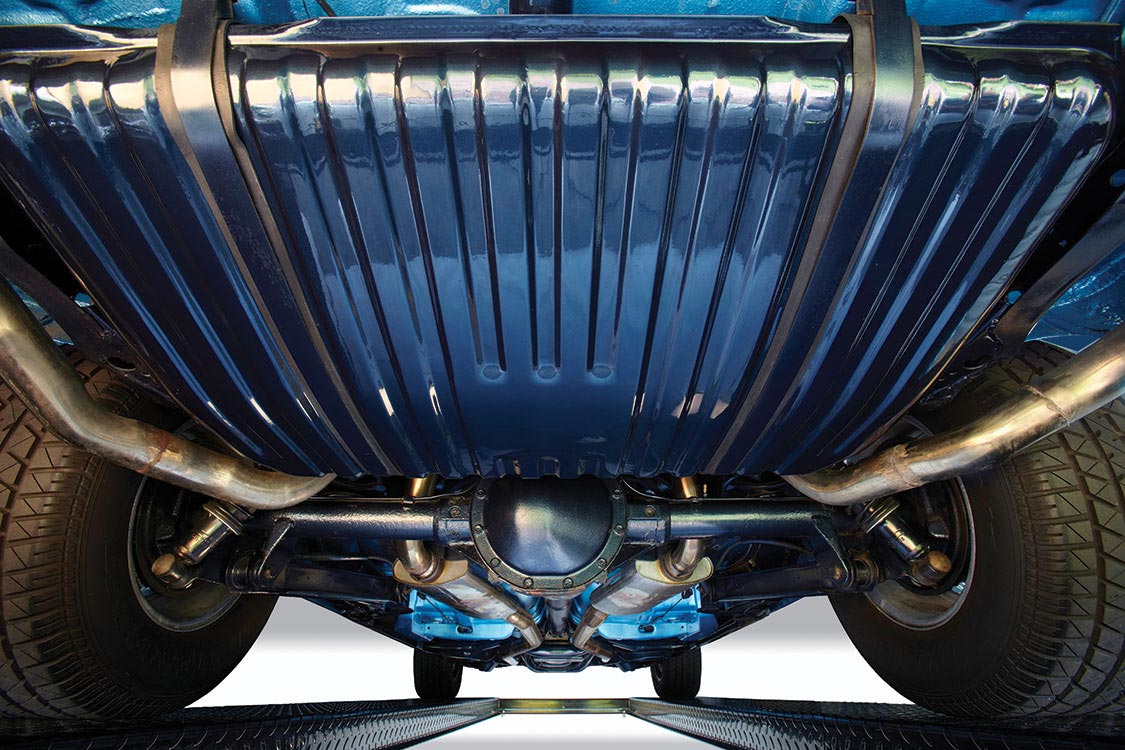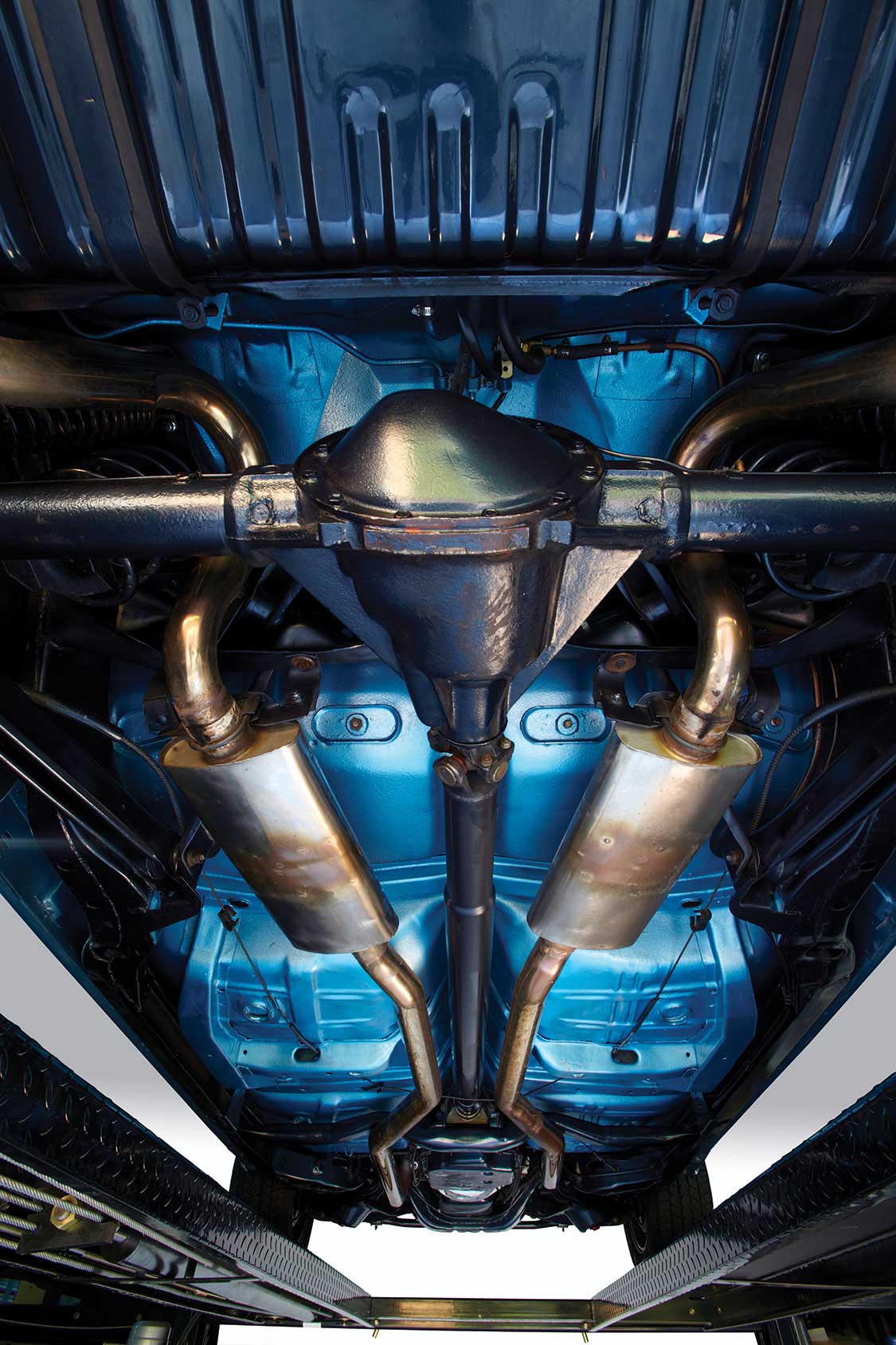McCoy Lancaster August 29, 2023 All Feature Vehicles
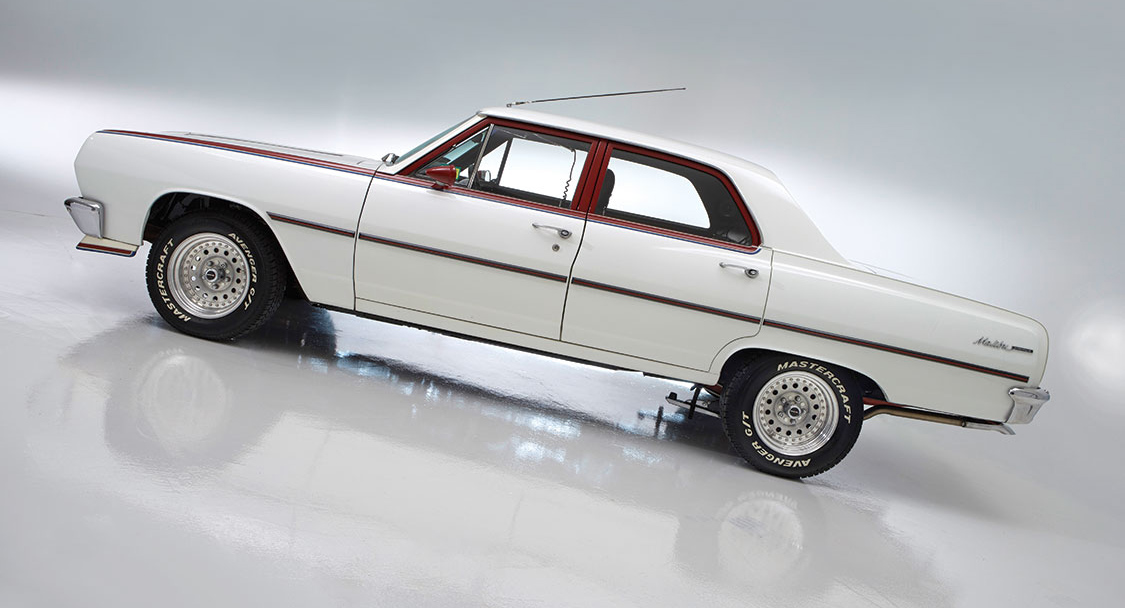
Have you ever wondered about the life of a car when it is being put together on a production line. What will happen to it? We see the photos of cars being made, a few of us get to be the ones who do the work, and all of us have had the opportunity to drive the finished product. What will happen to these creations? Will they spend their life in the snow, will they travel to exotic locations, will they be modified and will they be loved?
John and Donna McCoy-Lancaster are from Australia and own a number of rare muscle cars. The three Chevelles on these pages are a few of the cars in their eclectic collection. They may not be the same, in all cases, as when they left the production line but they are still alive and they are still very much loved. The McCoy-Lancasters share a passion with their family for Chevrolet vehicles, and they have built their collection from their first Chevelle— a 1969 coupe.
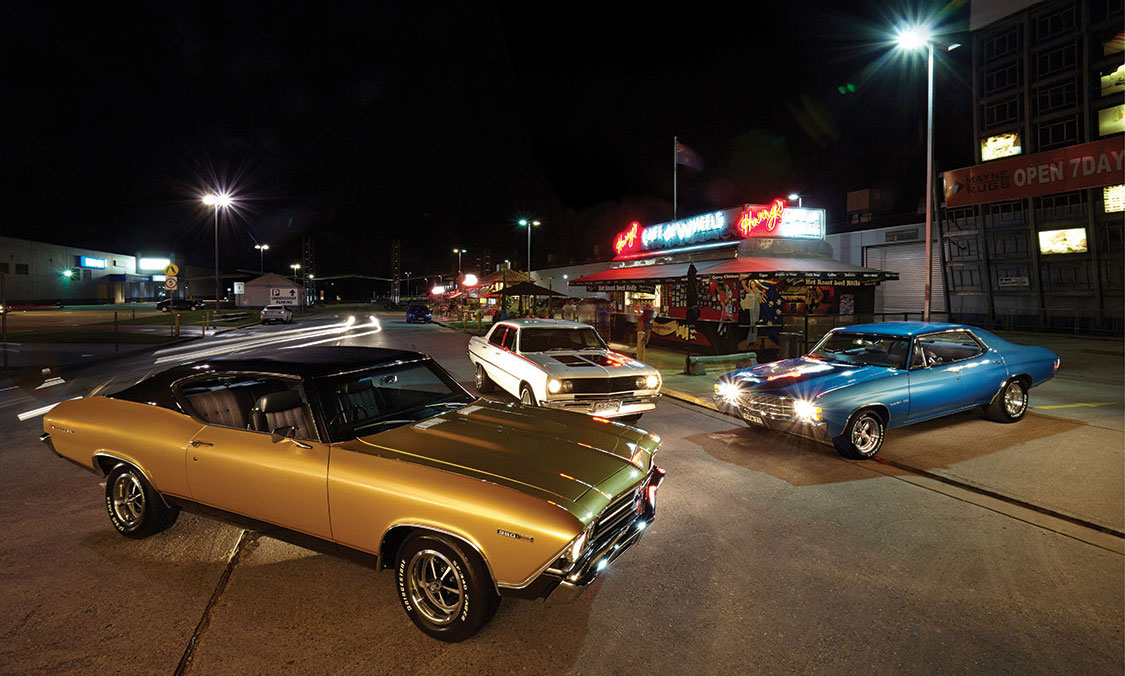
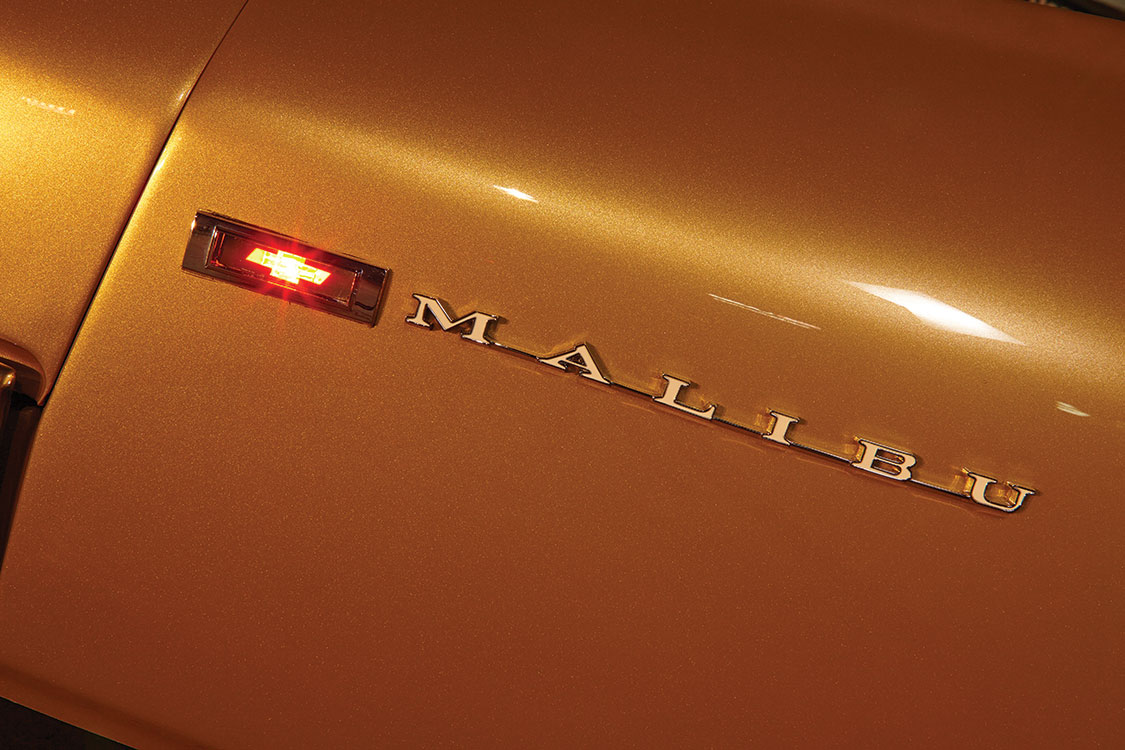
If you look closer, you will see that all three are right-hand drive. Now, in Australia, you don’t need to have a right-hand-drive vehicle to get either full or conditional (club) registration, but it sure makes sense when driving them on the other side of the road. Chevrolet produced cars in Australia from 1913 to 1972, mostly from knock-down kits imported from Canada. Until recently, there were only a few Chevelles in the country, and they are still not sought after the same way that some Cadillacs, Camaros, Mustangs and Shoebox Chevys are. Unlike the cars made in Australia, all of the Chevelles have been specially imported by mostly private owners. There are now about 100 Chevelles across all of Australia, and they are recognized for the muscle and handling they can provide as a real touring car. Many of them are now being used in drag racing or for the country’s major motorsport mecca—Summernats—as special burnout cars.
However, McCoy-Lancaster cars are for the road. The couple regularly takes them out to car events throughout the city of Sydney and around the island.
In the mid- to late-1970s, a man named Graham Stubbs took a factory right-hand-drive 1965 4-door Chevelle, modified it extensively and launched the Street Machine scene. Chevrolet manufactured right-hand-drive vehicles in South Africa and this was one of a very small batch of cars that were brought into Australia. It is thought that there were between three and five Australian Chevelles in 1965 and this is the only one still alive today. The car was dubbed (and painted) with its name: Malibu Magic. The car was an enigma because at the time, the main show vehicles were hot rods and vans. Stubbs was one of the pioneers of the modified car scene. He helped form the Australian [National] Street Machine Association (ANSMA), establishing the judging rules for modified vehicles, supporting the registration requirements and also organizing insurance for clubs to enable them to put on events. He was a visionary and a huge support for the burgeoning scene.
Stubbs suffered from emphysema and was ill for many years. After the car won all it could, including being the Top Street Machine for four years in a row, Stubbs parked the car in 1993 in his back shed and she stayed there for 20 years. Recently in 2013, Stubbs passed on. Donna and John contacted the family to pay their respects and to offer to bring the car back to life. And so it is that this car has now joined the McCoy-Lancaster family and proudly resides in their garage.
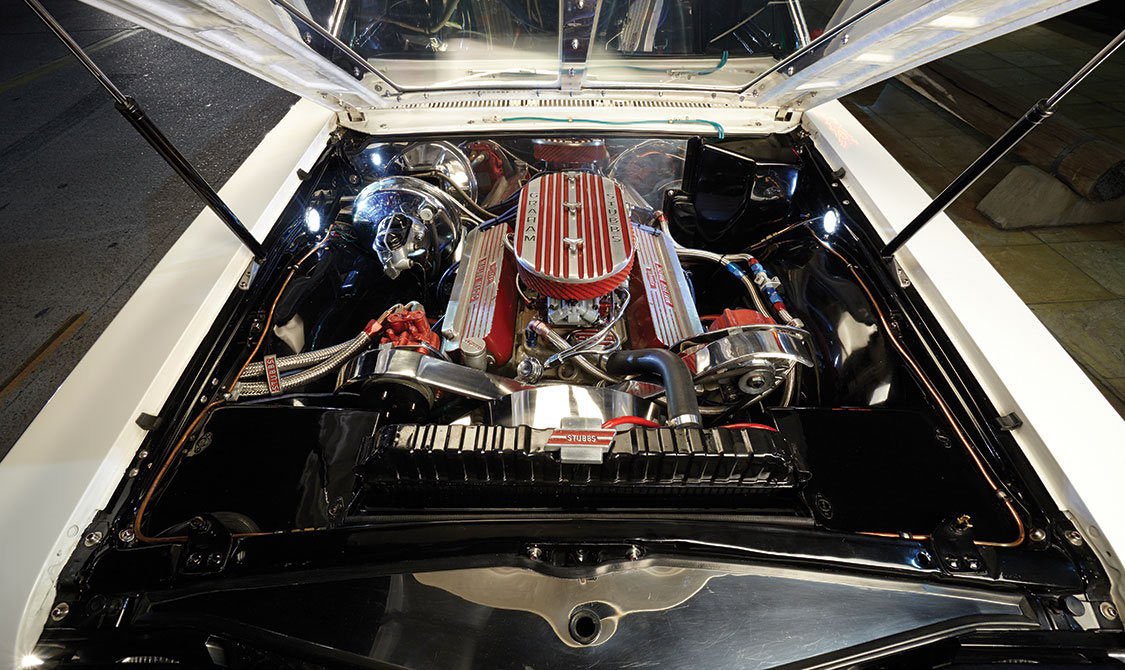
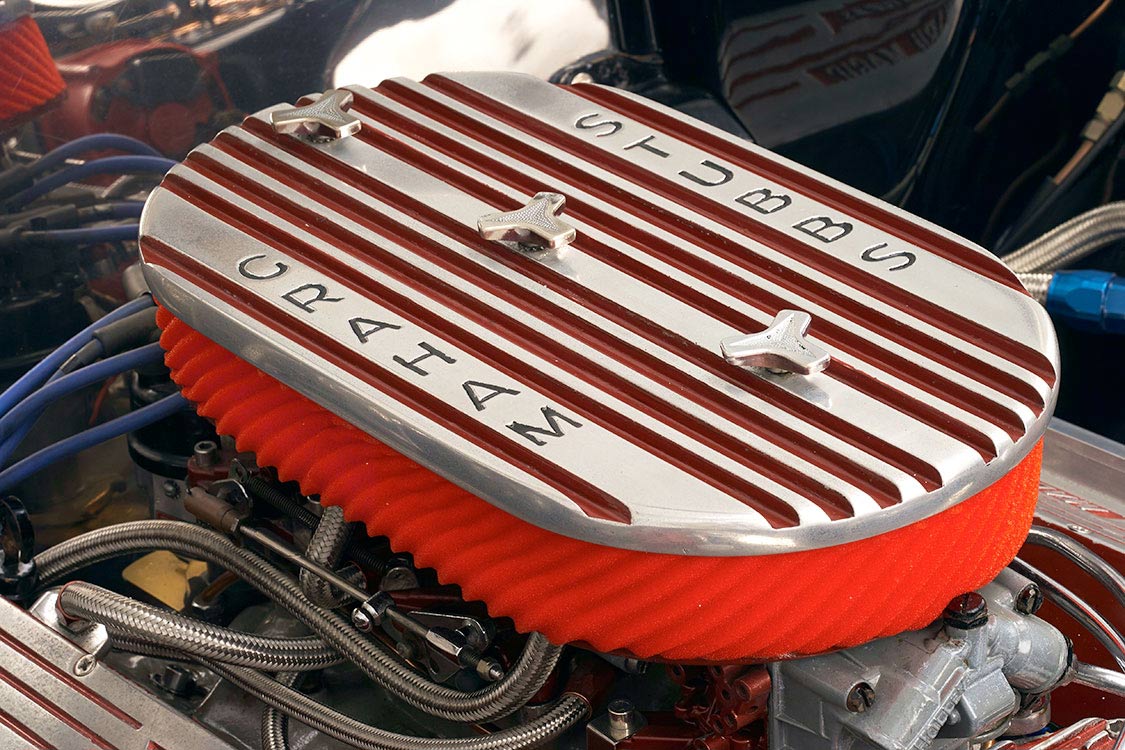
The car has been modified from top to bottom. The paint is straight white tinter, the color being something that very few modified cars are painted in—but it works. To highlight the shape of the car, Stubbs had special striping painted with a burgundy and blue. The car now provides the true red, white and blue from the Chevrolet Heartland. There is a specially fabricated fiberglass and Lexan hood that was created so people could see the engine without keeping the front lid open and retaining the ability to look at those classic muscle lines. The grille was originally a metal tube grille, later being changed to a dark blue metal horizontally lined grille that covers the lights and makes the front look fully custom. Below the front bar, the number plate folds down via a control next to the steering wheel inside the car to reveal two spotlights that can show the way. The back of the number plate is adorned with a sticker that is the catchcry of ANSMA: Together We Cruise, Divided We Lose. At the rear of the car is a specially designed light cluster with Malibu Magic lighting up at night. And the rear glass is etched with the outline of Australia on both sides with the Australian Street Machine Association logo. The wheels are Centerlines with 15 x 8 and covered with fresh 245 rubber all round from Mastercraft. When John was at SEMA in 2014, the guys at the Centerline booth couldn’t help admire how good the wheels look after all these years and miles the car has covered.
The original engine was a 283 that was taken out and replaced by a modified 327 that Stubbs built. Showcased under the Lexan hood is an 11:1 compression engine with a 1967 Corvette TriPower manifold and carbies. There is a Holley 350 in the center surrounded by two 500s. The car also runs a Turbo 400 Gearbox and a custom rear end built like a hot-rodder would. In 2014, the engine was dropped out and a complete refresh of the internals and all the gaskets was completed so as to stop any nasty oil leaks. For suspension, it has the standard coils up front and a nice anti-sway bar. The engineering work went into the rear end where we find it has the standard coils and coilover shocks, anti-sway bar, tramp rods and a custom-engineered Watts linkage. And it all works, the car handles the bumps beautifully and is a dream to drive. Many claim that the car looks like a gasser, but it is actually riding at factory ride height. It’s just that all the good bits hanging down in the car make it look like it’s sitting taller.
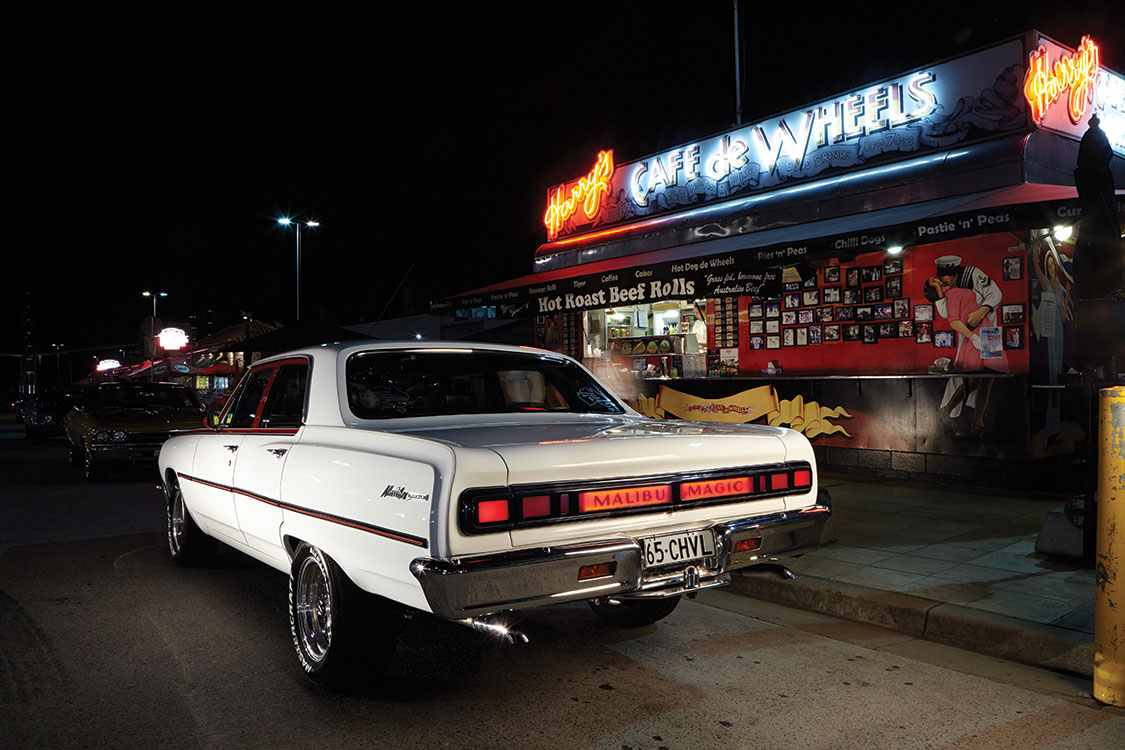
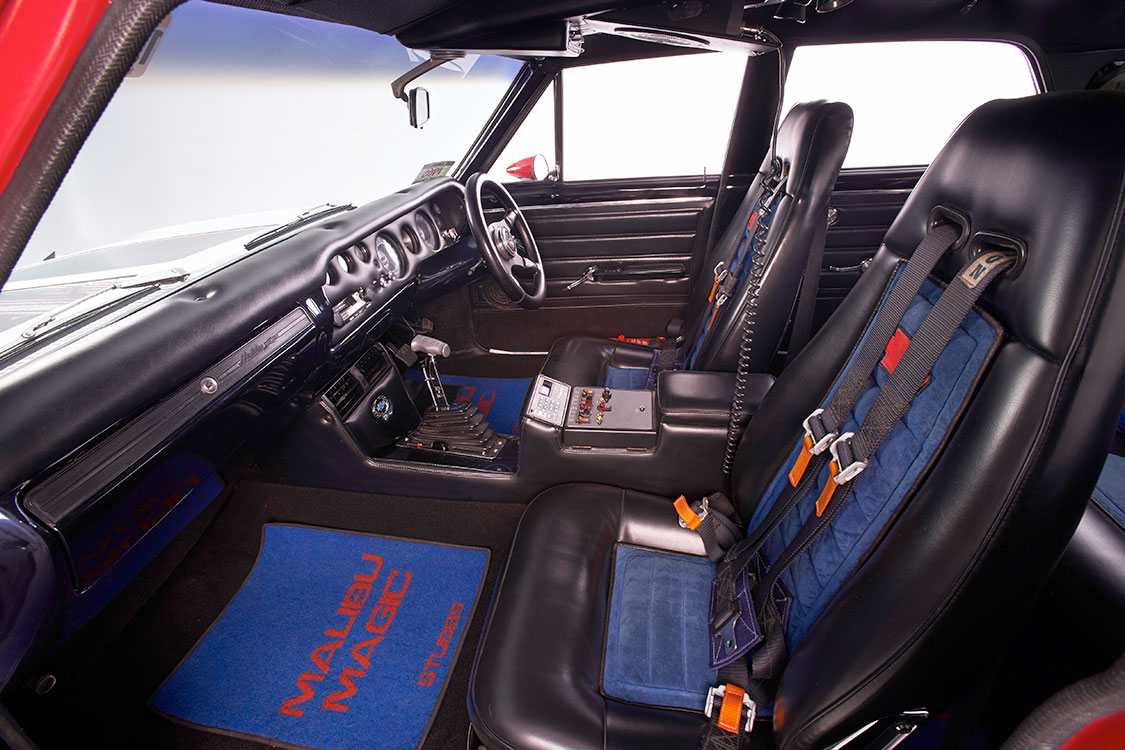
“We also heard that Stubbs was a pattern maker, John mentioned. “When we bought the car, we were given a number of the molds that Stubbs did by hand in his backyard.” The car was built a long time before billet was determined to be a volume material. When John caught up with some of the early pioneers of the scene, they recalled that Stubbs had all these great bits on the car but none of them could be stolen from him because he put his name all over them. He handcrafted molds for the air cleaner, tappet covers, radiator cap, and many brackets and handles throughout the car. He also had his name crafted onto the deep sump, bottom of the shock absorbers and the rear diff.
Inside there is a set of bucket seats from an early Mitsubishi that have replaced the front bench seat. They are set up with harness seat belts front and rear. There is a custom console with an early CompuTracker installed (with features for security, measurement of fuel consumption and an early version of aftermarket cruise control). The switches for the thermos fans, second fuel tank, idle speed and other details can be accessed here as well. The dash has been treated to additional gauges to measure the vital stats for the engine. Above there is another center console with a CB radio, equalizer and overhead lights. There are also diodes that light up like disco lights to the beat of music. The trim is specially built with the name included in the fabric. It is interesting to note that Stubbs had two sets of trim he could swap out overnight because they were attached via Velcro. In the rear seat is a black-and-white television that is installed with another equalizer and cassette player to give those in the rear the feel of a limousine muscle car. The trunk is also tricked out with compartments for tools, a specially constructed drawer in the shape of a Chevrolet bowtie and a big yellow bottle that is a custom-made fire extinguisher system with copper tubing through the car to the engine bay. It can be activated by a switch located next to the driver’s steering wheel.
The overall effect of the car is a true time capsule. For those who were around in the late 1970s through the 1980s and into the early 1990s, this car brings back a lot of memories.
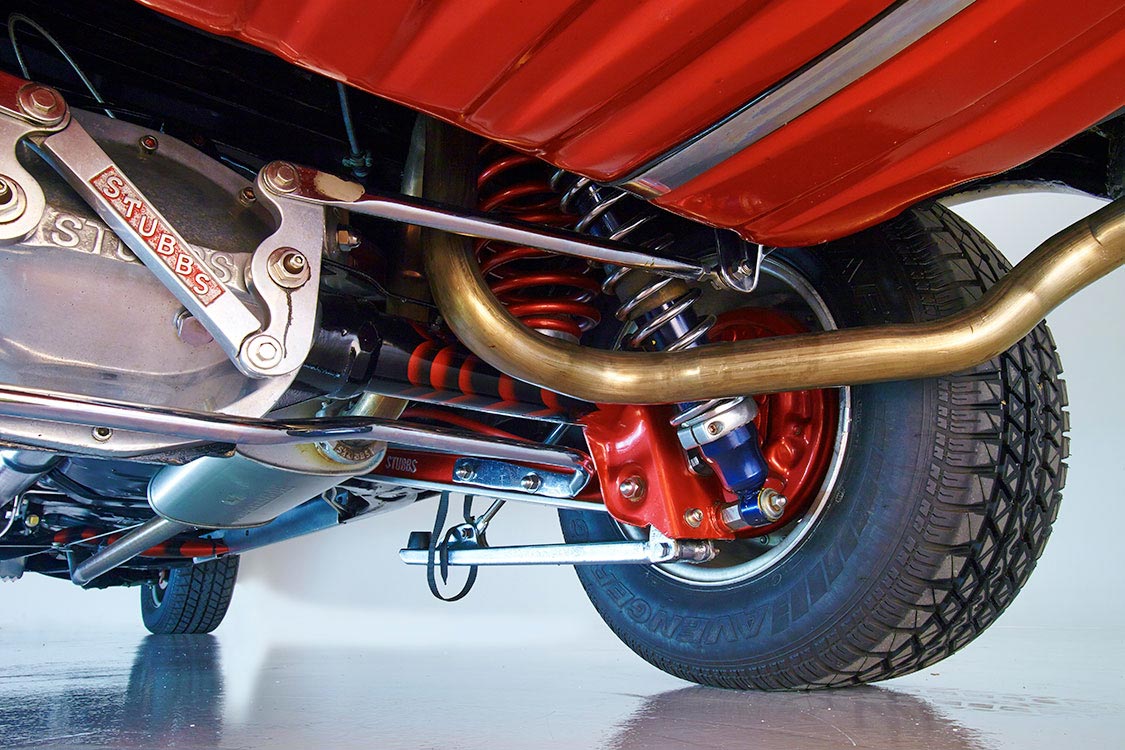
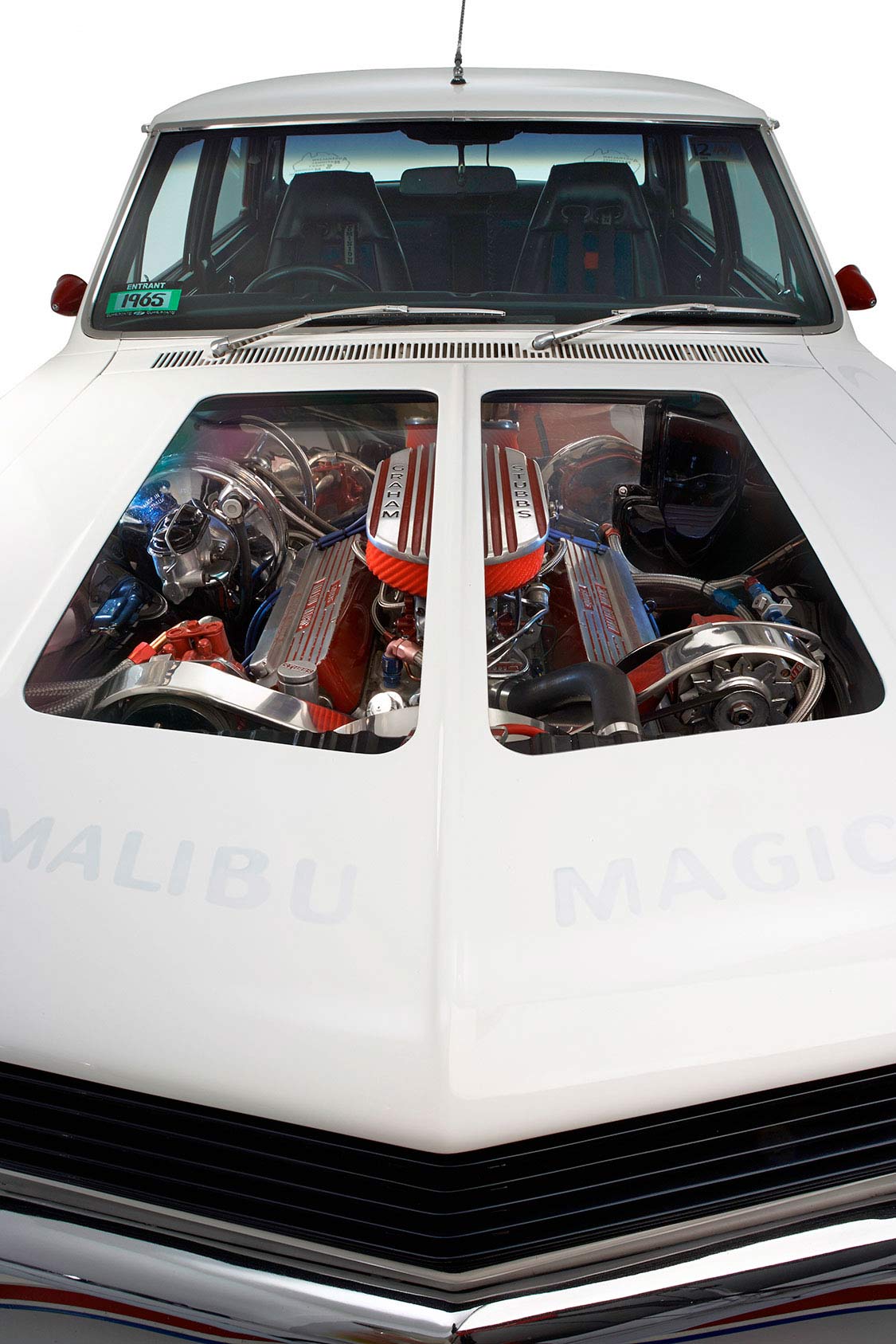
In the ceiling of Stubbs’s garage, John and Donna found the original fiberglass mold for the custom hood, as well as the original hood, windscreen, factory grille and custom tube grille, as well as the grille and glass protectors used when Stubbs traveled long distances to shows. A number of the trophies also accompanied Magic to her new home including the stainless-steel and silver cups awarded to her for Top Street Machine.
The overall effect of the car is a true time capsule. For those who were around in the late 1970s through the 1980s and into the early 1990s, this car brings back a lot of memories. Stubbs used to paint the car every year to ensure the quality was kept at the highest level.
“As a family, we are more into keeping Magic as originally modified by Stubbs and those who worked with him. This is actually the most modified car that we own,” says John. “We are very fortunate that Malibu Magic is part of our collection. Stubbs touched both of our lives at different times over the years. Every time we get into the car we’re like, okay, which buttons? Donna relates, “Even the other day, we popped down the sun visor and found Stubbs’s judging notepad and pencil attached by elastic straps.” There are so many more stories to tell.
Donna’s mom and dad (Irene and Allan McCoy) actually owned this 1969 Gold Malibu Coupe, which joined the family in 1974. It was purchased new in Colorado by an American serviceman who later received a posting to Darwin.
Today, Nugget is a stunning example of a first-class coupe. The car was fully restored in 2012 with a body off the chassis rebuild. The original vinyl roof was painted in the deep charcoal color, also used on the chassis and key details under the car. Below the sweet new hood lies a brand-new crate 350 hooked to a turbo 700 auto and a 10-bolt Salisbury original limited-slip diff. With enough go-fast goodies to put 360 bhp to the pavement, the neat small-block rumble echoes through aftermarket headers and a 2-in. twin stainless system.
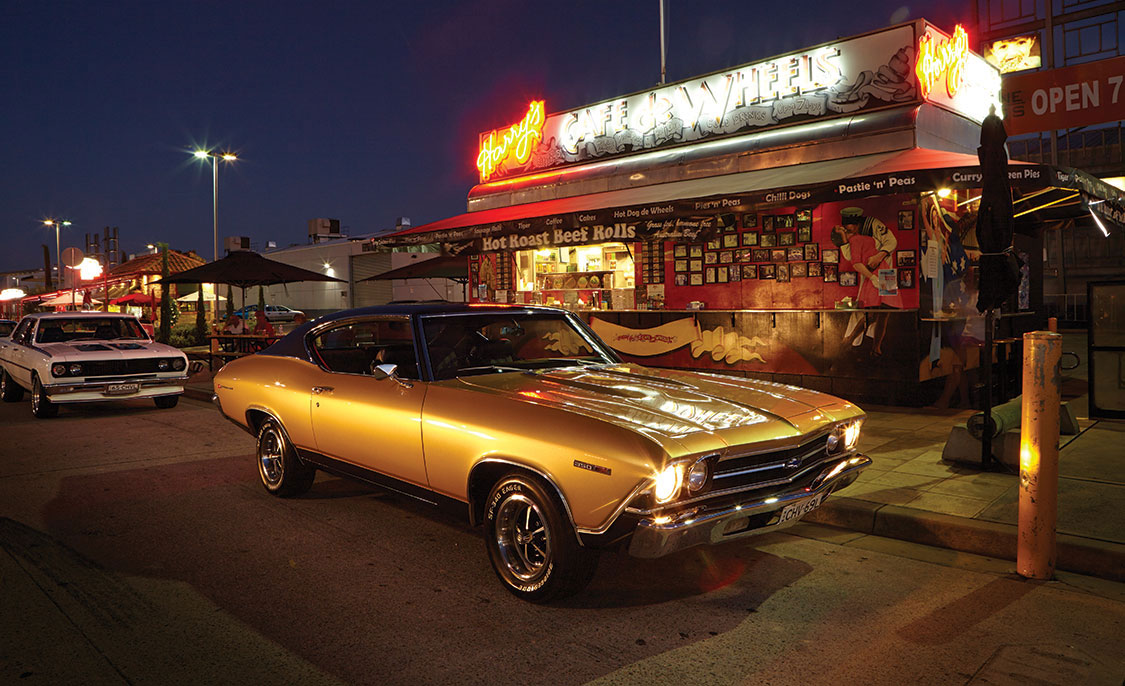
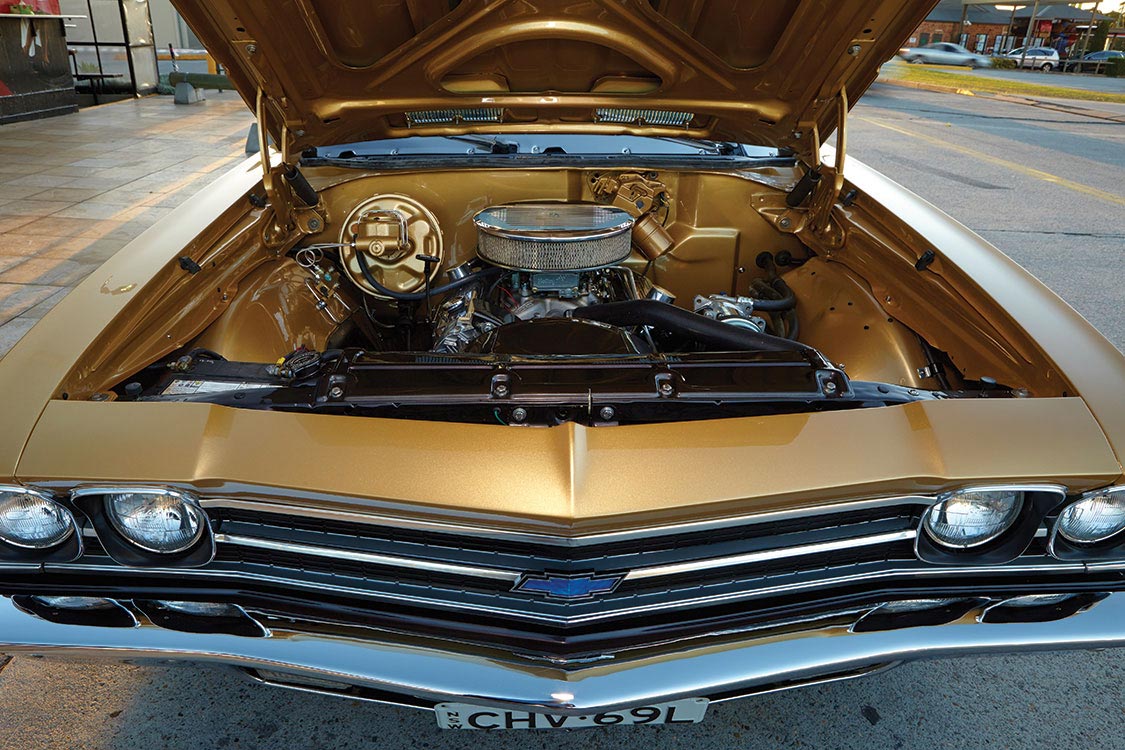
Viewed from the rear, the 1969 Malibu coupe cuts a powerful muscle car profile that’s amplified by a full set of original SS wheels. Rescued from a wrecked 1969 Chevelle, John had the cool hoops restored before wrapping them in period-perfect Bridgestone Eagers complete with white letters. It’s cool riding on the original 14-in. wheels.
The interior has been completely restored with a new stitched fabric that is impeccable and closely remains faithful to the original design. Black vinyl and button-studded cloth cover original SS bucket seats, which gives a color break to the black-on-black interior. Interestingly all 1969 right-hand-drive Chevelles utilize 1968 dash components changing the gauge arrangement from square to the predated circular instruments. The lens for the shifter has been updated to reflect the new 4-speed auto box and changes like a dream.
Many in Australia state that the striking pose of the 1969 coupe looks downright race-ready. The metal flake in the gold pops in the sunlight. In the right light, a keen eye will spot the added gold fleck in the charcoal hood for a surprising highlight. Also note the double hump hood that was available only on the SS while the Malibu remained flat.
Today, Nugget is a stunning example of a first-class coupe. The car was fully restored in 2012 with a body off the chassis rebuild.
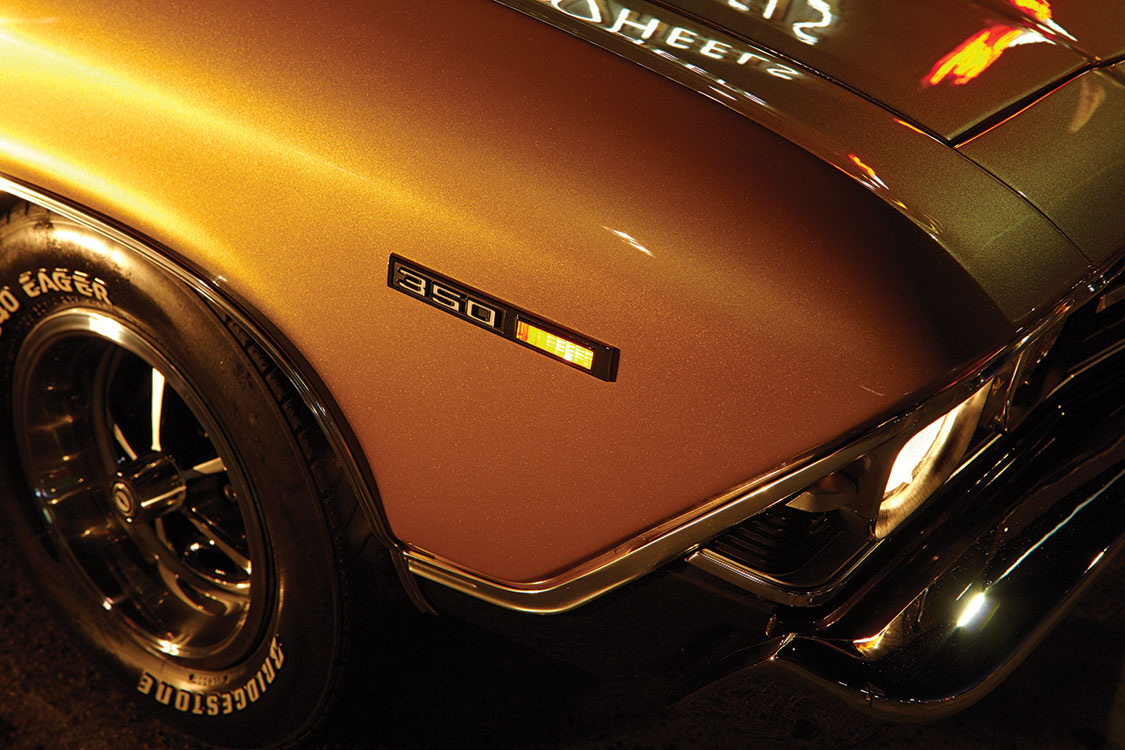
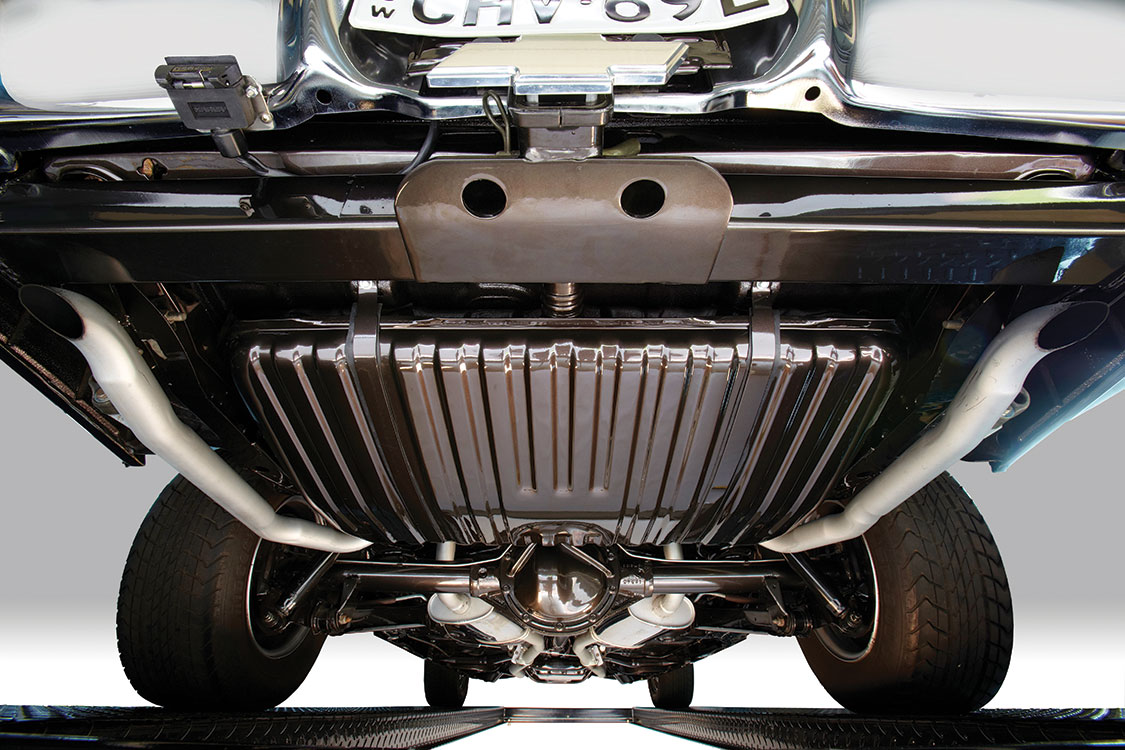
This particular Chevelle is a Malibu 400 4-door hardtop. John has been informed by one of the suppliers of car parts that this is one of just six factory big-block 402 Chevelles made with this body in 1971; she’s pretty rare, even in America. The Malibu 400 sat between a Chevelle Malibu and a Chevelle SS, and they are so rare they have their own web page. It is a numbers matching car with 27,000 original miles on the clock. The big 6-seater was purchased as a practical family run-around.
GM and other car manufacturers at this time built cars with up to 300 options. So this particular car was ordered with more than 45 factory options from new and initially went to its first owners in Newcastle. When the car was imported from the U.S., many Australians thought if you’re going to order a special car then why not choose a whole bunch of options. This has resulted in many of the early imported cars being particularly sought-after or very rare optioned cars. Thunder was first registered in Australia right-hand drive in 1971. The car was drag raced and used as a tow vehicle until being put away for 20-plus years.
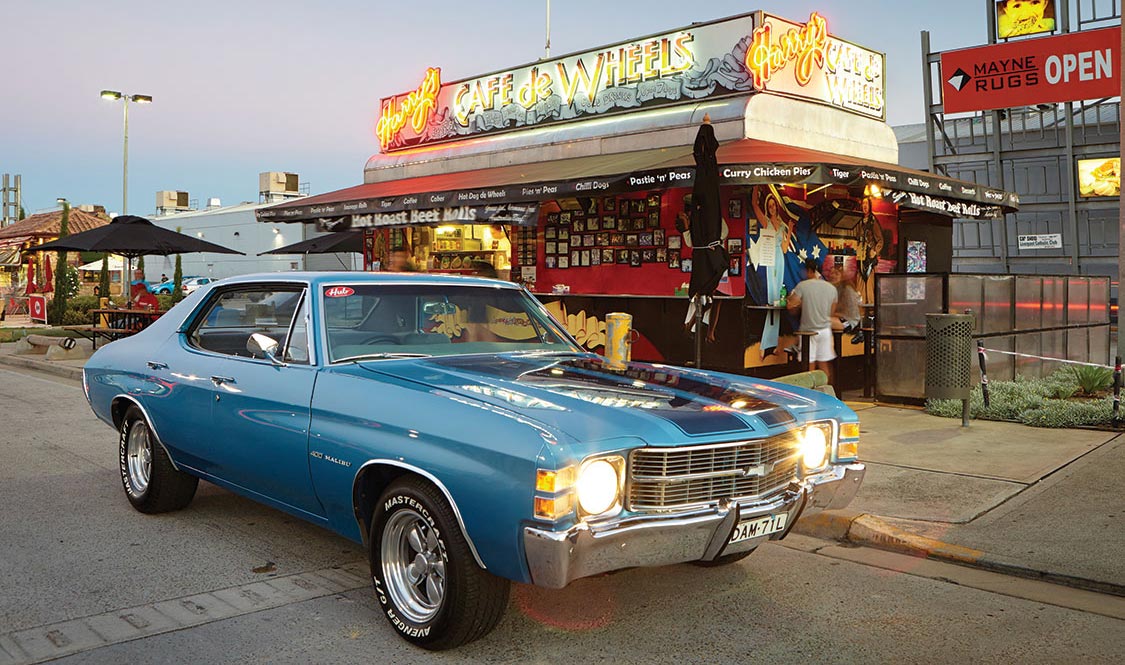
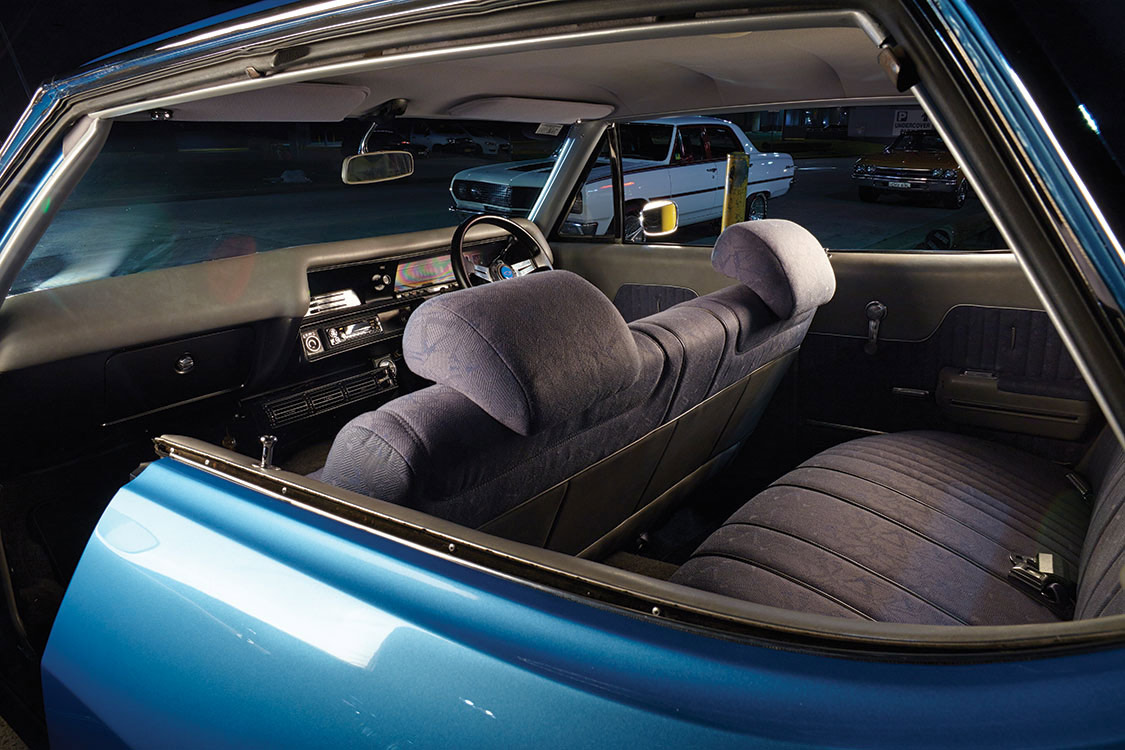
The original color was gold but with the family already having a gold car, John found a metallic light blue a good alternative factory color. The highlights for the challenge stripes, drivetrain and chassis are also painted in dark metallic blue from 1971, also a factory color. John says: “We wanted something different. Donna’s mom and dad traveled with me for the 1998 Hot Rod PowerTour that went from Los Angeles to Detroit. On the second night at Mesquite, we spotted this beautiful 1971 Chevelle with the metallic blue and black stripes. So we worked with a few colors and Thunder gets many compliments for how good she looks in all shades of light.”
Inside the muscular 4-door, Michael at Mr Trimmer in Sydney outfitted the family friendly interior to best represent the early 1970s time period and still be functional. A Mark IV under-dash air conditioner fits perfectly within its surroundings and delivers comfortable relief during Australian summers. Originally left-hand drive from Chevrolet, the big Malibu 400 retained its stock dash arrangement and gauges during the side-to-side swap providing a factory finish to the completed cabin quarters. You will see that the door trims have stainless-steel molded highlights. Donna’s father Allan is a master craftsman and created these molds as part of his business focusing on molding repairs and polishing.
So, what’s next? Well, John thinks there is a gap in the collection and is looking for a 1967 Malibu coupe, or maybe a wagon, to complete the odd-year Chevelles. American muscle is alive and well down under. If you ever head to Sydney, look up John and Donna and maybe they can take you for a tour. Just remember, they’re not what they seem and if you get in what you think is the driver’s side door, you may be searching for the steering wheel on the other side.
